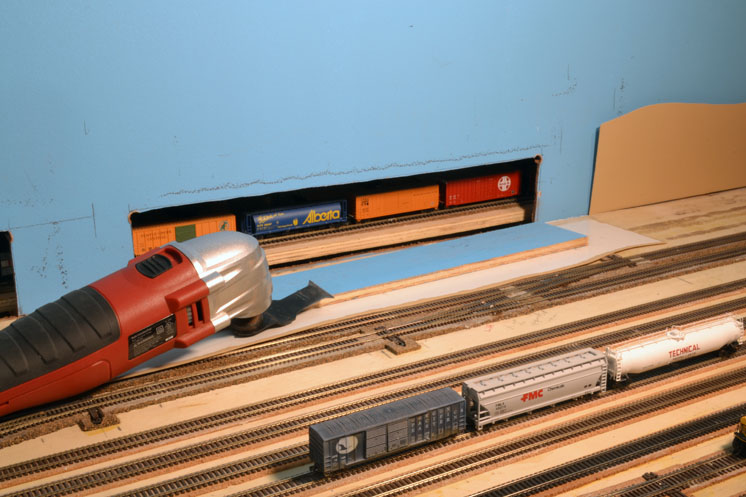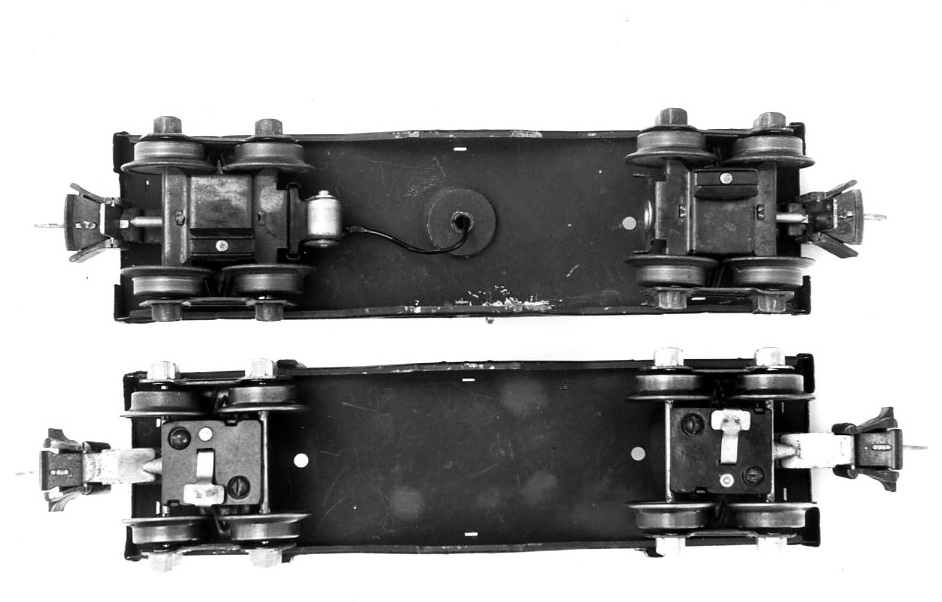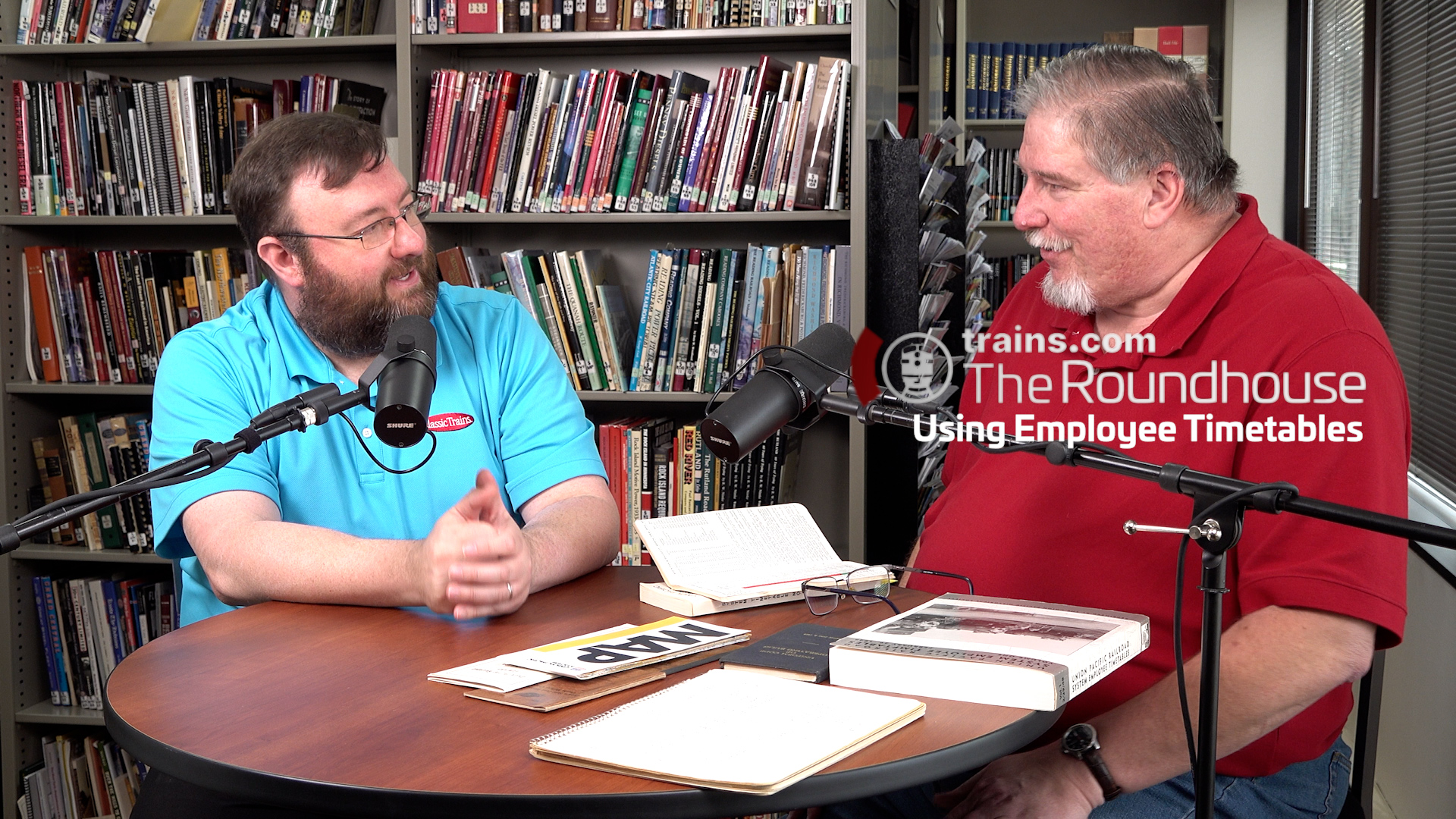
One very important design principle, as far as I’m concerned, is no long stretches of hidden and hard-to-access track. This rule is particularly important in N scale because our trains are so small. We can run them in spaces only 2 inches high and an inch wide, but there’s a big problem in doing so. Our hands are too big to cope with such tiny spaces.
The hidden-track trap
In 1985, the year I model, there were two major railroad yards in Bakersfield, Calif.: one for the Santa Fe and one for the Southern Pacific. Each had a roundhouse and a full complement of other buildings. Now, modeling yards takes lots of everything: track, turnouts, space, and oodles of time.
One yard would be quite enough, thank you, let alone one roundhouse and turntable. I chose the Santa Fe’s because I had always been a Santa Fe fan and loved warbonnet paint schemes (Who doesn’t?).
The Southern Pacific would get from staging to the modeled portion of the layout by sneaking behind the backdrop of the Santa Fe yard, as you can see in the photo. This was all fine and dandy as along as the trains stayed on the track, which 99.4 percent of the time they did.
If they didn’t, or if I needed to clean track, I was in trouble. I had to crawl under the layout, reach up blindly through benchwork and wiring, and carefully start plucking out derailed cars, hoping not to knock any onto the floor.
This wasn’t all that onerous if I was running trains alone. I could just say “shucks,” run Santa Fe trains instead, and put off the plunge for as long as I wanted, which was sometimes weeks.
All that changed, though, when I started hosting operating sessions. Then both railroads had to keep running, and I couldn’t take 15 minutes to be under the layout cleaning up a mess on the sneak track.
Coming to a head
Last August, after licking my wounds for more than two years, I attempted a second operating session. (I described the first, a catastrophe, in my January 2014 N Scale Insight column.)
Sure enough, Murphy’s Law (anything that can go wrong, will) reared up within the first five minutes. The first eastbound SP train out of staging entered the sneak track and only half of it came out at the other end. From under the layout I could see 17 pairs of pant legs waiting rather impatiently for something good to happen.
A plug-in backdrop
It was time for a solution, and actually I’d had one in mind for years. I would cut a series of access slots in the backdrop, then disguise them with removable plugs. I’d planned to do this clear back when I was building the benchwork and framing for the tempered hardboard backdrop, but decided to forgo it because I was in a hurry. This wasn’t the only part of my early planning that I skimped on only to regret it later. There’s a lesson here, “Do it right the first time.”
Many times I’d thought about retrofitting this feature, but I was hung up on a problem. If you look at the photo you can see what I mean. The tops and sides of these openings could be cut easily with a saber saw, but the bottom cut was a different matter. It had to be flush with the plywood yard surface, and I had to be careful not to hit and damage the track behind the backdrop.
The right tool for the job
Anyway, motivated by the aforementioned uncoupling behind the backdrop, I went to a big-box home-improvement store where I found a wide range of oscillating tools, just what I needed. The one I bought cost $16.99. I’m a firm believer in the old adage, “you get what you pay for,” especially in tools, but if it could cut those seven holes, I’d be happy. The tool did the job wonderfully and is still going strong.
I used the blanks I’d cut out as patterns to make the plugs from 1⁄2″ plywood. The new backdrop sections were cut from .040″ styrene and painted with my basic tan ground paint. Someday I’ll add buildings and trees cut from paper backdrops and laminated to good stiff cardboard to glue to these plastic pieces.
For now I’m declaring victory. Problems behind the backdrop are easy to get to and I can keep the trains running on time.














I purchased an oscillating tool many years ago, for a remodeling job. (not model trains) It has become one of my favorite tools around the house. Cutting, sanding, and even has putty knife like scrapper. I am sure as I build my RR it will get a lot of use.